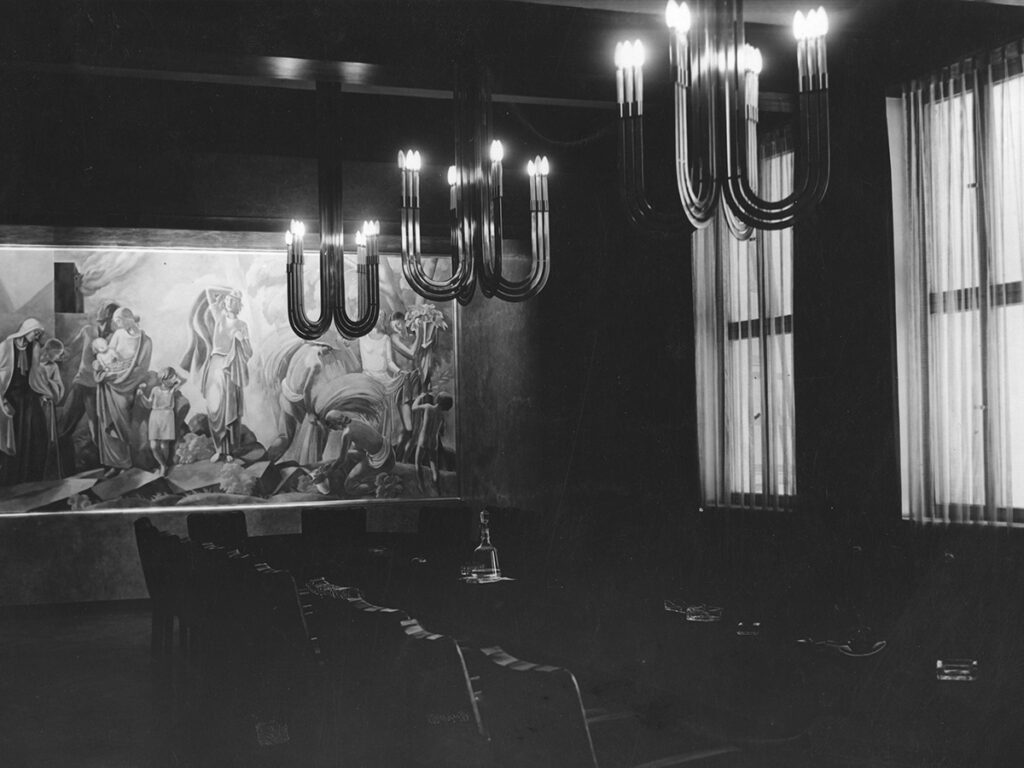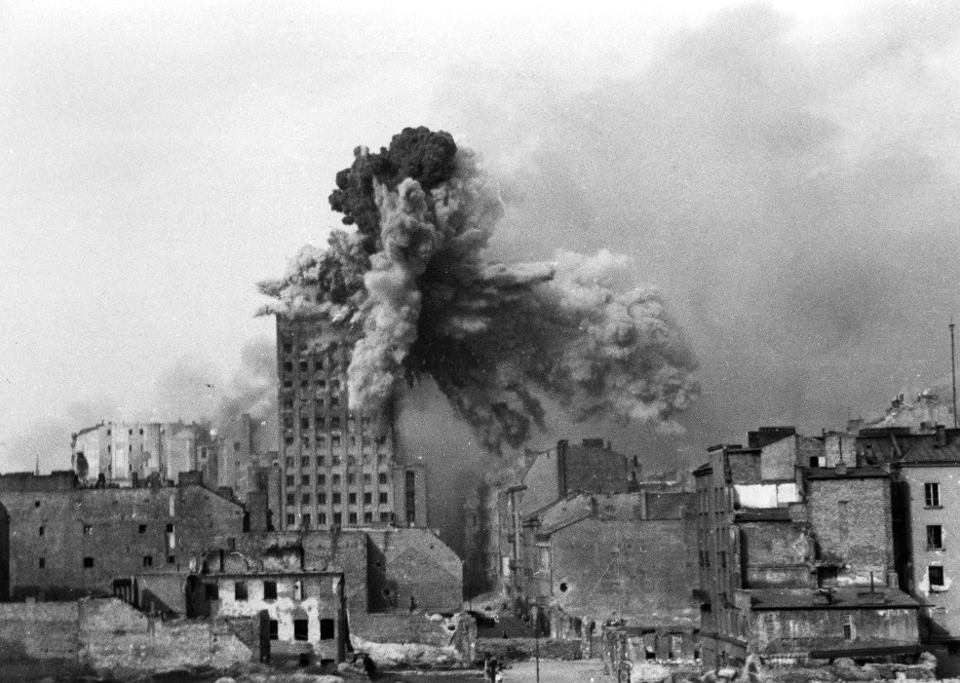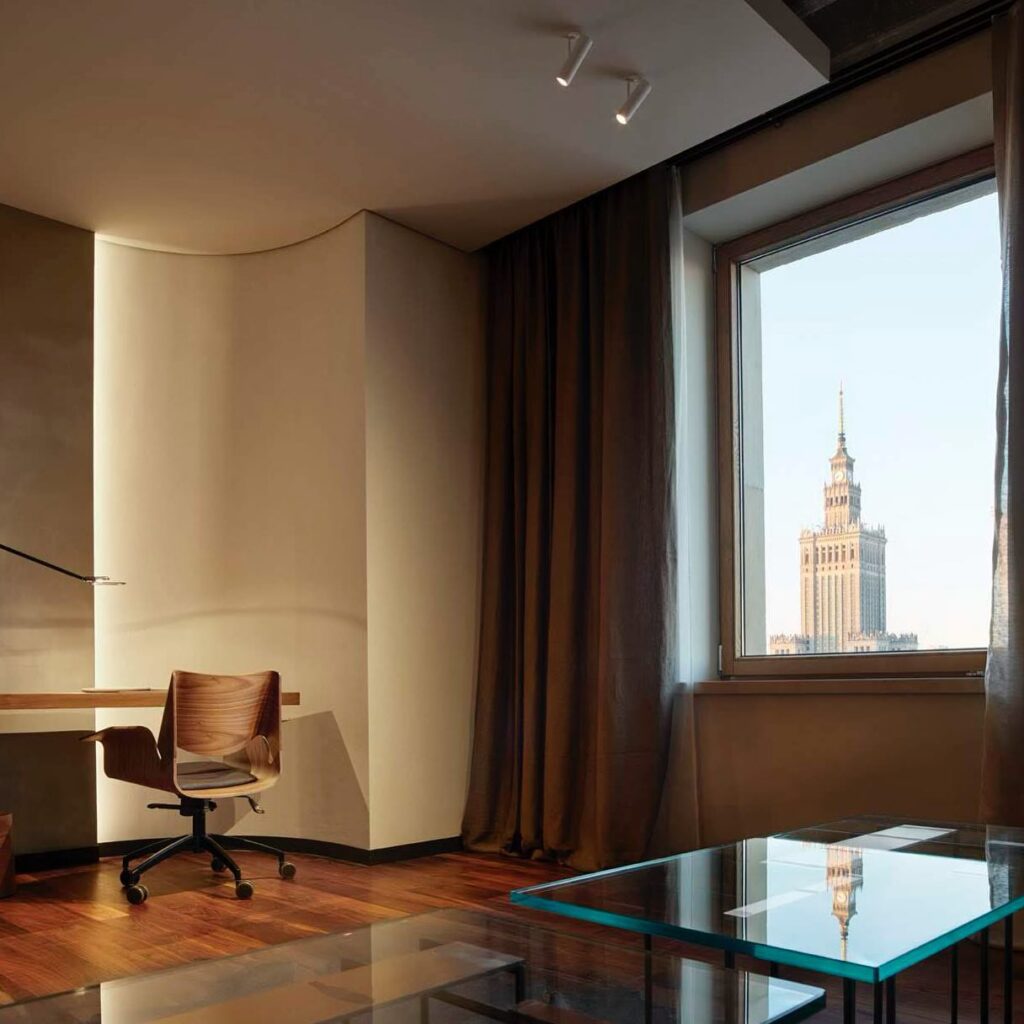Continuing our look at the hidden histories of Warsaw’s hotels, join us this week for an inside look at the back story behind the Hotel Warszawa…

Continuing our look at the hidden histories of Warsaw’s hotels, join us this week for an inside look at the back story behind the Hotel Warszawa…

Nowadays, most locals call the building that towers over Pl. Powstańców Warszawy the Warszawa after the hotel that it houses. This, however, was not always the case. Completed in 1933, and put into use the following year, this early skyscraper was originally titled the Prudential in honor of its principal tenant – the globally renowned British insurance firm.
Initially intended to be just 11-storeys, this was increased during the planning stage to 16-floors in all. Heavily influenced by the trans-Atlantic skyscrapers trending in cities like New York and Chicago, Marcin Weinefeld’s project became Poland’s tallest tower.
In fact, only the 96-meter Boerentoren in Antwerp beat it for size. Visible from 20 kilometers away, its height wasn’t overlooked by Poland’s television firms and in 1936 the roof was handed over to house the nation’s first TV transmitter.
But although Prudential could be considered the flagship tenant, the building’s higher floors had been set aside for several apartments that were, at the time, considered among the most luxurious in Warsaw – the biggest penthouses covered a whopping 240 sq/m.
Constructed using two million bricks, two thousand tons of concrete and one-and-a-half thousand tons of concrete, it was a building whose huge dimensions were matched by the luxuries within: there were frescoes by Wacław Borowski, one of the country’s leading artists of the era, walnut furniture by Nina Jankowska, and a heap of alabaster and marble trimmings.


Its importance did not diminish during the occupation and the Prudential’s height made it a pivotal Home Army target once the 1944 Warsaw Uprising kicked-off; realizing the morale boost it would give citizens were they to see the Polish flag flying from the nation’s tallest building, capturing the building was an early priority – it’s fall sparked scenes of wild jubilation. “When the Polish flag was hoisted from it, people left their homes just to look at it, crying and laughing and spontaneously singing the national anthem,” wrote historian Alexandra Richie.
The German response was ferocious and the building was subsequently battered by 1,000 rounds of artillery. On August 28th, 1944, it was struck by a two-ton shell but still its steel skeleton held firm – captured on Sylwester Braun’s Leica camera, his images of the resulting explosion would become iconic.
Never captured in battle, the Prudential only returned to German hands when the city’s surrender was signed – a symbol of stubborn defiance, it had withstood everything the Nazis had thrown at it. Even so, it made for a sorry sight. Filled with over nine thousand tons of rubble, it would take years for it to be restored. Leading these efforts was the original architect, who himself had survived the war by the skin of his teeth having been imprisoned in Dachau.


Due to the new political reality, Weinfeld’s first design was simplified to fit the concepts of Socialist Realism, and more floors were squashed in thereby giving the building a more cramped feeling. Still, its renewal was welcomed, and when it relaunched in 1954 it was to fulfill the function of a hotel. It was named the Warszawa.
Famous for its social gatherings and black tie balls, for a short while the hotel became the pride of PRL Poland; the glory years did not last. When Communism collapsed, the hotel too found itself falling from grace. Looking increasingly dark and dowdy, it was finally closed in 2003. Fortunately, this was not the end.


Purchased by the Likus family in 2009, there could have been no better buyer for this historic property. Already known for luxuriously recharging a string of heritage addresses in Kraków, Wrocław and Katowice, their patient revival process saw the Warszawa finally reopened in 2018.
Spectacular and contemporary yet also tastefully restrained, the rebooted Warszawa now stands out as one of the most exciting stays in Central Eastern Europe. High on natural materials, and looking teasingly minimalistic, the design-forward style is a sensuous joy.